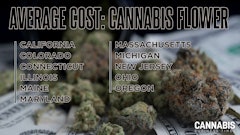BETHESDA, Md., Jan. 12, 2021 /PRNewswire/ -- PRESS RELEASE -- CULTA, a Maryland-based producer of craft cannabis and extracts, has announced a move to a larger workplace in Bethesda as part of its expansion. The new headquarters will allow CULTA to add employees as it scales its business.
The two-floor office space is nearly 150% larger than CULTA's previous office in Silver Spring. The new facility will provide CULTA with much-needed space to accommodate additional administrative headcount. "The decision to relocate to our new, larger office in Bethesda was a logical next step in our long-term growth strategy," said CULTA Chief Financial Officer Jonathan Clark.
This relocation comes less than a year after CULTA expanded the footprint of their outdoor grow facility in Cambridge to three acres, and only months after hiring Jonathan Lassiter as the vice president of retail sales. Most recently, CULTA announced plans to enter the edibles category with a new brand launching in Q1 of 2021.
"The new office is a physical example of our evolution," said CULTA President and Co-Founder Mackie Barch. "I'm incredibly proud of what my team achieved in 2020. I want to continue to provide the team with the tools and human resources needed to hit goals in 2021."
This year, CULTA plans to add 100 more employees across its farm in Cambridge, retail dispensary in Baltimore, and headquarters in Bethesda. Those interested in joining the CULTA team can view open positions here. At this time, CULTA plans on recruiting all new employees in-house.


















